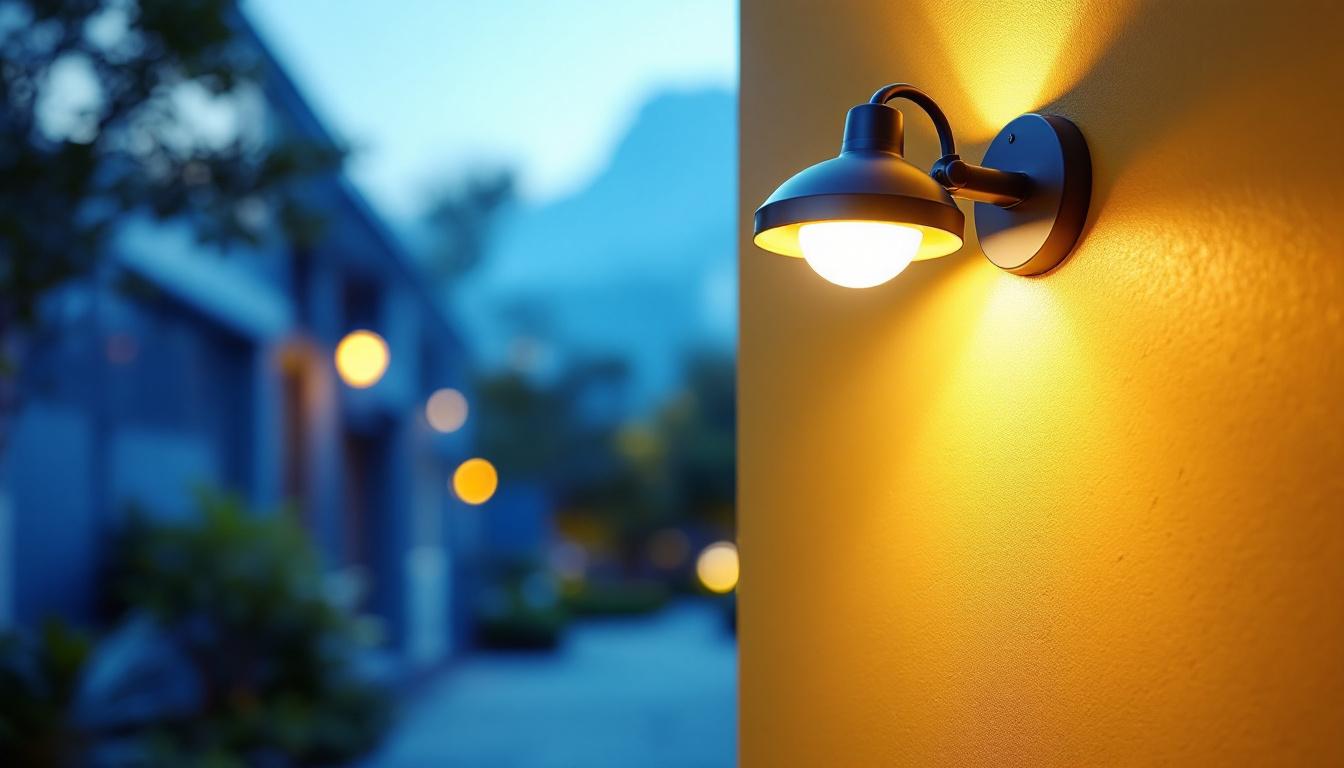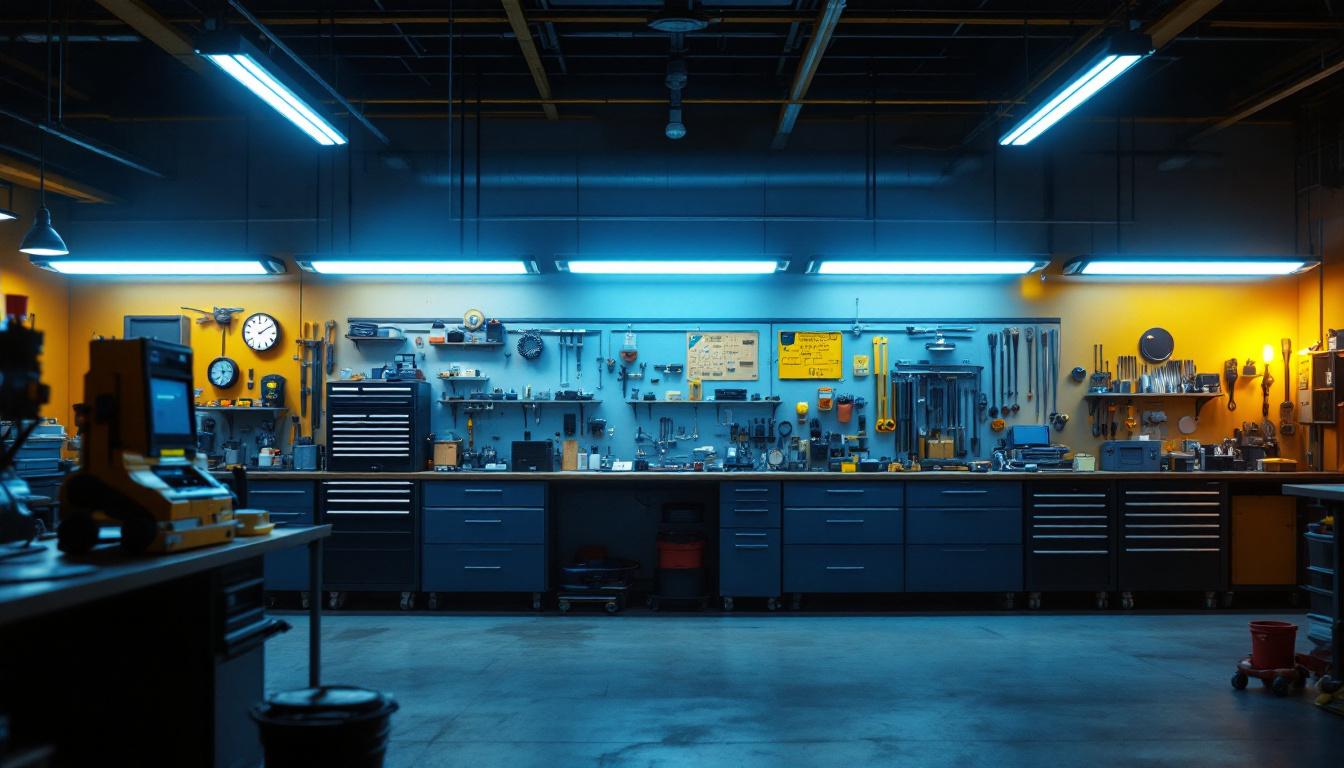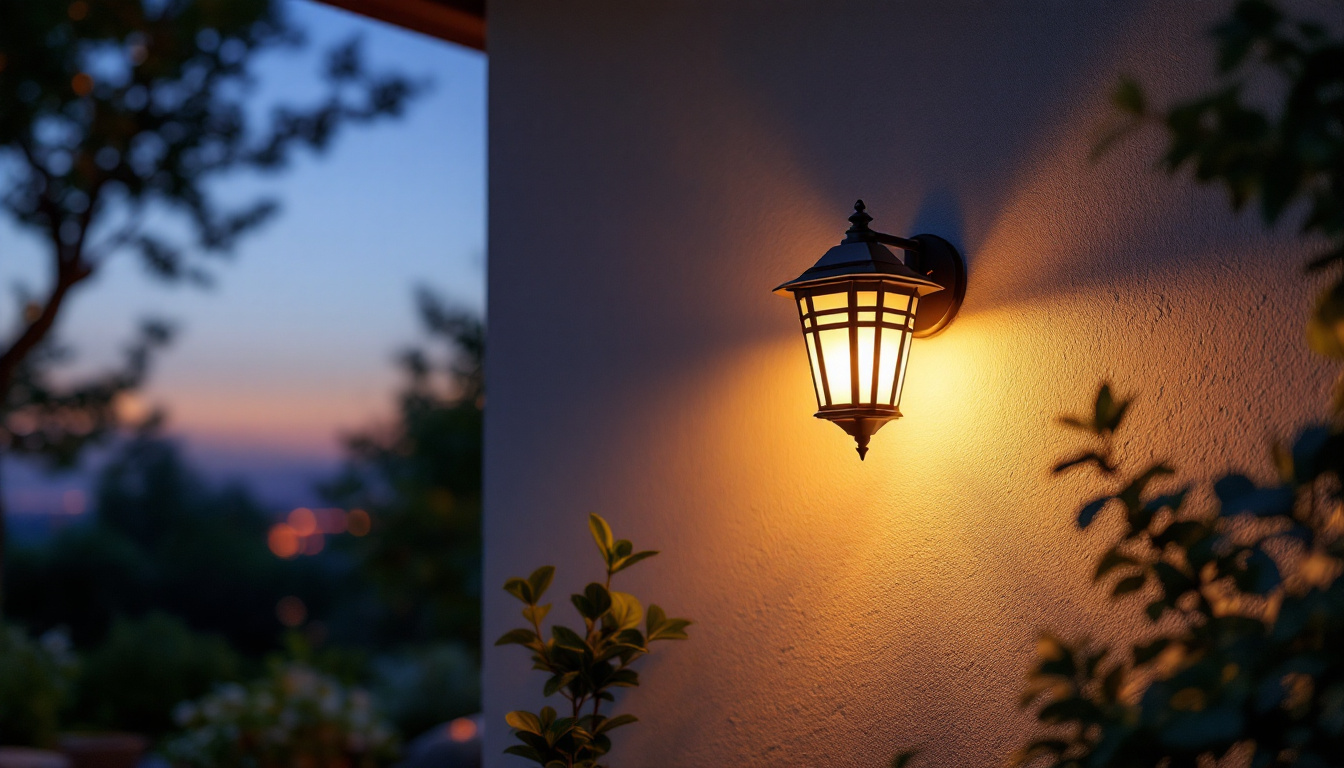
Outdoor wall light mounting brackets serve a crucial role in the installation and functionality of outdoor lighting systems. These brackets not only support the fixtures but also contribute significantly to the safety and longevity of the lighting installations. Understanding their importance can help lighting contractors ensure that their projects meet both aesthetic and safety standards.
In this article, we will explore the various aspects of outdoor wall light mounting brackets, including their design, materials, and how they enhance safety in lighting installations. By delving into these topics, contractors can make informed decisions that benefit their clients and improve the overall quality of their work.
One of the key factors to consider when selecting outdoor wall light mounting brackets is the material they are made from. Common materials include stainless steel, aluminum, and heavy-duty plastic, each offering unique benefits. For instance, stainless steel brackets are known for their durability and resistance to corrosion, making them ideal for coastal areas where saltwater can be a concern. On the other hand, aluminum brackets are lightweight and can be easily installed, while still providing adequate support for various types of light fixtures. Understanding the environmental conditions where the lights will be installed is essential for choosing the right material, ensuring that the brackets withstand the test of time.
Moreover, the design of the mounting brackets can significantly influence the overall aesthetic of the lighting installation. Brackets come in a variety of styles, from minimalist designs that blend seamlessly with modern architecture to ornate styles that can complement traditional homes. Some brackets even feature adjustable angles, allowing for precise positioning of the light fixtures to achieve the desired illumination effect. This versatility not only enhances the functionality of the lighting but also allows contractors to cater to the specific preferences of their clients, ensuring that the outdoor lighting is both practical and visually appealing.
One of the primary functions of an outdoor wall light mounting bracket is to provide stability and security for the lighting fixture. A well-designed bracket ensures that the light remains securely attached to the wall, preventing it from becoming loose or falling over time. This is particularly important in outdoor settings where exposure to wind, rain, and other environmental factors can compromise the integrity of the installation.
Moreover, a stable mounting system reduces the risk of accidents. A light fixture that is improperly secured can pose a hazard to pedestrians and vehicles passing by. By using high-quality mounting brackets, contractors can mitigate these risks and enhance the safety of their lighting installations. In addition, regular maintenance checks on the mounting systems can help identify any wear and tear, allowing for timely replacements or adjustments that further ensure safety and longevity.
Proper alignment of outdoor lighting fixtures is essential not only for functionality but also for visual appeal. Mounting brackets play a significant role in achieving the desired alignment, ensuring that lights are positioned correctly to illuminate the intended areas. This is particularly important in residential and commercial properties where lighting design can impact the overall ambiance and safety of the space.
Additionally, aesthetically pleasing installations can enhance the property’s value. A well-lit exterior can create a welcoming atmosphere, making it essential for contractors to consider both the functional and visual aspects of their lighting projects. The choice of materials and finishes for the mounting brackets can also contribute to the overall design narrative of the property. For instance, a sleek, modern bracket can complement contemporary architecture, while a more ornate bracket might be suitable for traditional or historic homes. This attention to detail not only elevates the visual impact but also reflects the owner’s commitment to quality and design integrity.
The materials used in outdoor wall light mounting brackets are critical to their performance and longevity. Given the outdoor environment, these brackets must be constructed from durable, weather-resistant materials that can withstand the elements. Common materials include stainless steel, aluminum, and high-quality plastics, each offering unique benefits.
Stainless steel, for example, is known for its strength and resistance to corrosion, making it an excellent choice for coastal areas where saltwater exposure is a concern. Aluminum is lightweight and resistant to rust, while high-quality plastics can offer flexibility and resistance to UV degradation. Choosing the right material is essential for ensuring that the mounting brackets will last and maintain their integrity over time. Additionally, some manufacturers have begun to incorporate protective coatings or finishes that enhance the durability of these materials, providing an extra layer of defense against harsh weather conditions, such as heavy rain, snow, and extreme temperatures.
Another critical factor to consider when selecting mounting brackets is their weight capacity and load distribution. Different lighting fixtures come with varying weights, and it is essential to choose brackets that can adequately support the specific fixtures being installed. Overloading a bracket can lead to failure, resulting in damage to the fixture and potential safety hazards.
Contractors should always check the specifications of both the lighting fixtures and the mounting brackets to ensure compatibility. Proper load distribution is also vital; brackets should be designed to evenly distribute the weight of the fixture across the mounting surface to prevent stress points that could lead to failure. Furthermore, it is advisable to consider the installation surface itself—whether it be wood, concrete, or brick—as this can influence the overall stability and effectiveness of the mounting system. For instance, using anchors or additional support structures may be necessary in softer materials to ensure that the brackets remain securely fastened over time, especially in areas prone to high winds or seismic activity.
To maximize the effectiveness of outdoor wall light mounting brackets, contractors must adhere to best practices during installation. First and foremost, it is crucial to select the right location for the brackets, ensuring they are mounted on a stable and secure surface. This may involve reinforcing the wall or using additional supports if necessary. Additionally, considering the angle and height of the light fixtures can greatly influence their performance, as proper positioning can enhance illumination while minimizing glare and shadows.
Furthermore, understanding the environmental conditions of the installation site is essential. For instance, areas prone to high winds or heavy rainfall may require more robust mounting solutions to withstand the elements. Using weather-resistant materials and finishes can also prolong the lifespan of the brackets and fixtures, ensuring they remain functional and aesthetically pleasing for years to come. Additionally, contractors should be aware of local building codes and regulations, which may dictate specific requirements for outdoor lighting installations, further ensuring safety and compliance.
Even after installation, ongoing maintenance and inspections are vital to ensuring the continued safety and functionality of outdoor lighting systems. Contractors should recommend regular checks of the mounting brackets to identify any signs of wear, corrosion, or loosening over time. Addressing these issues promptly can prevent accidents and prolong the life of the lighting fixtures. Seasonal inspections, particularly before and after harsh weather conditions, can help identify potential problems before they escalate.
In addition to visual inspections, it can be beneficial to periodically test the electrical connections and functionality of the lights themselves. This proactive approach helps to maintain a safe and effective lighting system, providing peace of mind for both contractors and property owners. Keeping a maintenance log can also be advantageous, allowing contractors to track the performance of the lighting system over time and make informed decisions about necessary upgrades or replacements. Moreover, educating property owners on basic maintenance practices can empower them to take an active role in the upkeep of their outdoor lighting, fostering a collaborative approach to safety and functionality.
Recent advancements in design and engineering have led to the development of innovative outdoor wall light mounting brackets that enhance safety. These designs often incorporate features such as anti-vibration technology, which helps to keep fixtures securely in place even in windy conditions. Additionally, some brackets include built-in safety mechanisms that prevent accidental dislodging of the fixture.
Contractors should stay informed about the latest trends and technologies in mounting bracket design. By utilizing these innovative solutions, they can offer clients improved safety and reliability in their outdoor lighting installations.
Adhering to local and national safety standards is paramount in any lighting installation project. Outdoor wall light mounting brackets must meet specific regulations to ensure they are safe for use. Contractors should familiarize themselves with these standards and ensure that the products they use comply with all relevant guidelines.
By prioritizing compliance, contractors not only enhance the safety of their installations but also protect themselves from potential liabilities. This commitment to safety can also serve as a selling point when discussing projects with clients, demonstrating a dedication to quality and professionalism.
Outdoor wall light mounting brackets are more than just hardware; they are essential components that significantly enhance the safety and functionality of outdoor lighting installations. By understanding the importance of proper mounting, selecting the right materials, and adhering to best practices during installation, lighting contractors can ensure that their projects are secure and reliable.
As the industry continues to evolve, staying informed about innovative designs and compliance with safety standards will be crucial for contractors looking to provide the best possible service to their clients. Ultimately, investing in high-quality mounting brackets and prioritizing safety will lead to successful lighting installations that enhance both the aesthetic and functional aspects of outdoor spaces.
Ready to elevate your outdoor lighting installations with safety and style? LumenWholesale is here to support your success. Our extensive selection of spec-grade lighting products, including robust outdoor wall light mounting brackets, is designed to meet the highest industry standards. With unbeatable wholesale prices and the convenience of free shipping on bulk orders, you can trust us to provide premium lighting solutions that blend quality, affordability, and ease. Don’t let middleman markups dim your project’s potential. Choose LumenWholesale for Wholesale Lighting at the Best Value and brighten your lighting installations today.

Discover expert strategies for lighting contractors to overcome common challenges with LED recessed lighting installations.

Discover the ultimate guide for lighting professionals with our essential checklist for buying light bulbs.

Discover the must-know features and benefits of 8 ft shop lights for lighting contractors.

Discover how wall mount solar lanterns can revolutionize your lighting installation projects with eco-friendly efficiency and stylish design.